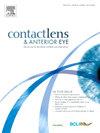治疗干眼症的 LipiFlow:Cochrane 系统综述摘要。
IF 4.1
3区 医学
Q1 OPHTHALMOLOGY
引用次数: 0
摘要
目的:评估 LipiFlow 治疗成人干眼病 (DED) 症状和体征的有效性和安全性:在以下数据库中搜索随机试验:方法:2022 年 10 月 24 日,在以下数据库中检索随机试验:CENTRAL、MEDLINE Ovid、Embase.com、PubMed、LILACS、ClinicalTrials.gov 和 WHO ICTRP。纳入的研究对象为研究者定义的患有 DED 或睑板腺功能障碍 (MGD) 的成人(≥18 岁)。研究采用了标准的 Cochrane 方法:本研究包括 13 项试验,共随机抽取了 1,155 名参与者(66% 为女性;年龄范围 = 19 至 86 岁)。其中五项试验对 LipiFlow 和基本热敷进行了比较。对这些试验中的症状评分进行分析后发现,4 周后 LipiFlow 和基本热敷疗法的症状差异证据相互矛盾。在比较 LipiFlow 和基本热敷法时,没有证据表明两者在睑板腺表达、睑板腺质量或泪液破裂时间方面存在差异。另有 5 项试验将 LipiFlow 与恒温设备进行了比较。对这些试验在 4 周后的症状评分进行的分析表明,恒温设备与 LipiFlow 相比,眼表疾病指数(OSDI)评分平均降低了 4.59 分。其余 3 项纳入的试验无法进行分组比较。总体证据的确定性较低或很低,大多数试验被评估为偏倚风险较高。没有一项试验报告了与干预相关的、威胁视力的不良事件:结论:LipiFlow 的效果与其他 DED 治疗方法相似。结论:LipiFlow 与其他 DED 治疗方法的效果相似,但仍需在充分遮盖和标准化测试方法的基础上开展进一步研究。本文章由计算机程序翻译,如有差异,请以英文原文为准。
LipiFlow for the treatment of dry eye disease: A Cochrane systematic review summary
Purpose
To evaluate the effectiveness and the safety of LipiFlow for treating signs and symptoms of dry eye disease (DED) in adults.
Methods
The following databases were searched for randomized trials: CENTRAL, MEDLINE Ovid, Embase.com, PubMed, LILACS, ClinicalTrials.gov, and WHO ICTRP on 24 October 2022. The included studies were conducted in adults (≥18 years) with DED or meibomian gland dysfunction (MGD) as defined by the investigators. Standard Cochrane methodology was applied.
Results
This study included 13 trials that randomized a total of 1,155 participants (66 % female; age range = 19 to 86 years). Five trials compared LipiFlow with basic warm compresses. Analyzing symptom scores in these trials yielded conflicting evidence of a difference in symptoms between LipiFlow and basic warm compresses after 4 weeks. There was no evidence of a difference in meibomian gland expression, meibum quality, or tear breakup time when comparing LipiFlow with basic warm compresses. Another 5 trials compared LipiFlow with thermostatic devices. Analysis of symptom scores in these trials at 4 weeks showed that thermostatic devices had reduced Ocular Surface Disease Index (OSDI) scores by a mean difference of 4.59 as compared with LipiFlow. The remaining 3 included trials could not be grouped for comparisons. The overall evidence was of low or very low certainty, with most trials being assessed as having a high risk of bias. No trial reported any intervention-related, vision-threating adverse events.
Conclusions
LipiFlow performs similarly to other DED treatments. Further research with adequate masking and a standardized testing methodology is still needed.
求助全文
通过发布文献求助,成功后即可免费获取论文全文。
去求助
来源期刊

Contact Lens & Anterior Eye
OPHTHALMOLOGY-
CiteScore
7.60
自引率
18.80%
发文量
198
审稿时长
55 days
期刊介绍:
Contact Lens & Anterior Eye is a research-based journal covering all aspects of contact lens theory and practice, including original articles on invention and innovations, as well as the regular features of: Case Reports; Literary Reviews; Editorials; Instrumentation and Techniques and Dates of Professional Meetings.
 求助内容:
求助内容: 应助结果提醒方式:
应助结果提醒方式:


